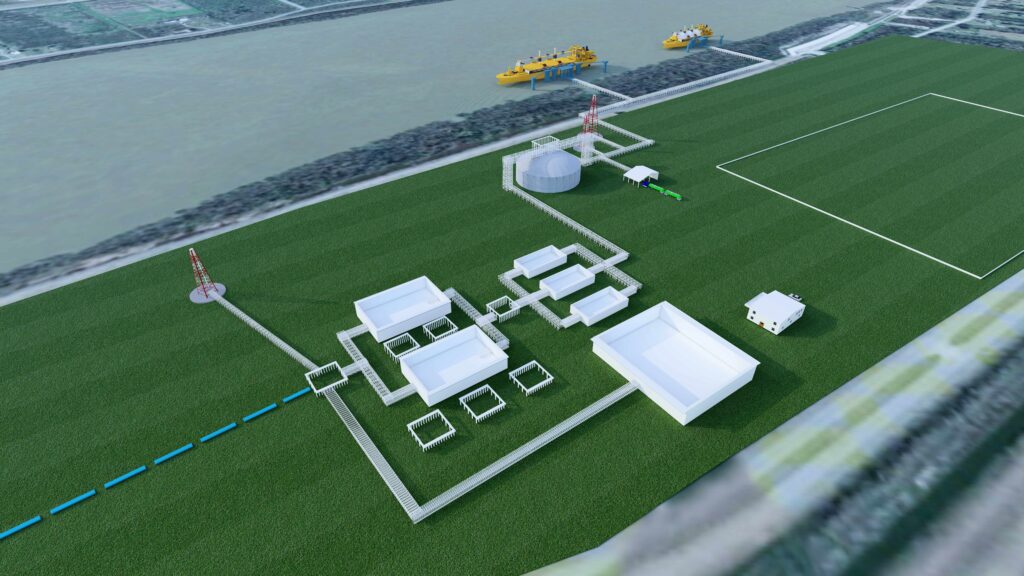Houston-based Gulfstream LNG has selected French LNG containment giant GTT to provide LNG tank technology for its planned onshore export project in Plaquemines Parish, Louisiana.
Gulfstream LNG revealed this in a statement on Thursday announcing that it has received approval from the US FERC to start the pre-filing permitting process, kicking off the regulatory review for its proposed 4 million tonnes per annum modular export facility.
The LNG terminal developer led by Vivek Chandra previously selected technical partners, including Baker Hughes as the liquefaction equipment provider, Honeywell UOP to provide its gas treatment technology, and Kiewit to provide engineering, procurement, and construction support.
The firm also said on Thursday that GTT will provide LNG tank technology and containment system for the project, but it did not provide further details.
Gulfstream LNG plans to build one LNG tank with a capacity of 240,000 cbm.
If realized, this would be the first ever project in the US to use GTT membrane technology for onshore LNG tanks.
In January 2023, HQCEC completed the construction of the world’s largest onshore LNG storage tanks incorporating GTT’s GST membrane containment technology at the Tianjin Nangang LNG import terminal in China owned by Beijing Gas.
These tanks each have a capacity of 220,000 cbm.
FERC approval
In April, Gulfstream LNG sought approval from the FERC to initiate the environmental pre-filing review for its mid-sized onshore LNG export project.
The FERC, which has assigned Gulfstream LNG docket number PF24-5, regulates the siting, construction, operation, and maintenance of LNG terminals and related infrastructure.
Gulfstream LNG said this “key achievement” follows the closing of its initial seed funding round and its move to a nearby downstream site on the same side of the Mississippi River as its previously announced location.
The upgraded 418-acre site, with over three kilometers (over two miles) of deepwater Mississippi River frontage, is secured under a long-term 50+ year lease agreement with a private landowner.
Gulfstream LNG said the site is traversed by a 26” natural gas pipeline that will supply, as per an executed agreement with the pipeline operator, the full volume of feed gas required for the operation of the planned LNG facility at its nameplate capacity.
The firm claims it is the first greenfield (non-expansion) LNG project in the US onshore permitting process since 2019.
Besides the tank, Gulfstream LNG facilities will include two trains for gas processing, three electric-drive liquefaction trains each with an average base LNG production capacity of about 1.4 mtpa, two marine loading berths with one capable of receiving smaller barges and vessels, and one for servicing larger ocean-going LNG carriers, and an on-site gas-fired power generation plant.
Gulfstream LNG is also evaluating various CO2 capture, use and storage options to reduce its emissions.
According to the firm, first production, anticipated in less than six years, will coincide with a forecasted shortfall in global LNG supply exacerbated by recent geopolitical events and natural production declines in many legacy facilities.
Gulfstream is considering multiple commercial business models, including tolling by offtake customers and by upstream gas producers, as well as FOB sales.
In contrast to other facilities on the Gulf Coast, Gulfstream LNG plans to supply domestic, regional, and international LNG markets via river barges, small ships, bunkering vessels, and large tanker exports under long-term contracts, it said.

